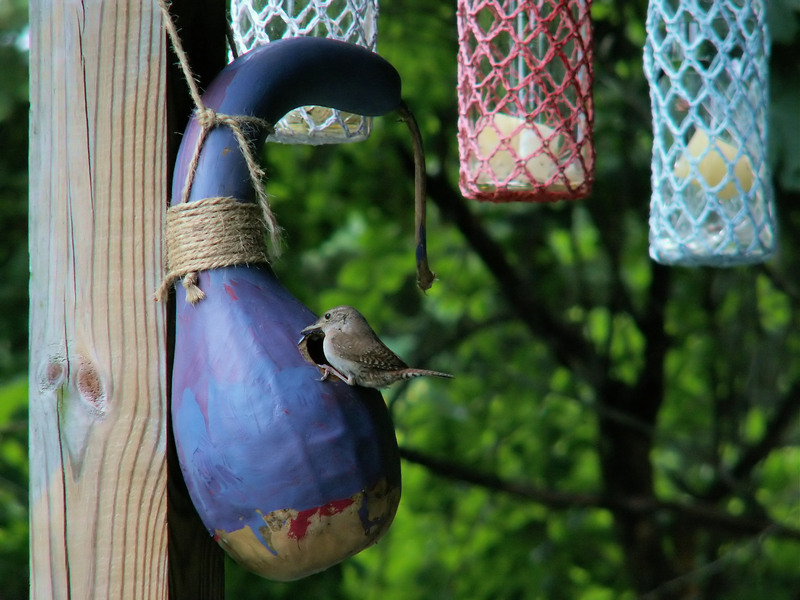Cardboard Disposal: Eco-Conscious Methods for a Greener Planet
With the surge of online shopping, deliveries, and packaging, cardboard waste has become a prominent part of our everyday lives. While cardboard is an inherently recyclable material, improper disposal can tarnish its eco-friendly image. Learning and implementing eco-conscious cardboard disposal methods not only helps save the environment but also encourages responsible habits in communities and industries worldwide.
Understanding Cardboard and Its Environmental Impact
Cardboard, commonly used for shipping boxes, product packaging, and containers, is crafted from paper pulp extracted from wood or recycled paper. Before diving into green cardboard disposal techniques, it's crucial to recognize its environmental impact:
- Resource consumption: Cardboard production relies on trees, contributing to deforestation when not responsibly sourced.
- Waste accumulation: Mulitplying cardboard waste in landfills can cause environmental hazards and escalate waste management costs.
- Recyclability: Cardboard is highly recyclable, reducing the need for virgin materials and saving energy.
Eco-conscious cardboard waste management helps minimize the depletion of natural resources, prevents landfill overflow, and greatly reduces carbon footprints.

Why Cardboard Disposal Matters
When cardboard is discarded irresponsibly:
- It may end up in landfills, where decomposition emits greenhouse gases such as methane.
- Contaminated cardboard (greasy pizza boxes, wet or soiled packages) cannot be easily recycled, often resulting in less cardboard being reused.
- Recyclable cardboard tossed in the trash means that new trees have to be harvested, putting further stress on our natural environment.
Thus, environmentally friendly cardboard disposal practices play a pivotal role in fostering a sustainable lifestyle and reducing our ecological footprint.
Best Eco-Conscious Cardboard Disposal Methods
1. Cardboard Recycling: The Gold Standard
Undoubtedly, recycling cardboard stands as the most effective eco-friendly disposal method. Here's why recycling is paramount:
- It saves trees, energy, and water compared to manufacturing new cardboard from raw materials.
- Recycled cardboard can be transformed into new packaging, paperboard, and various paper products.
- Recycling reduces landfill space requirements and cuts down on greenhouse gas emissions.
How to Prepare Cardboard for Recycling
- Remove Contaminants: Take out all plastic wrap, foam, tape, and food residues. Only clean and dry cardboard can be processed.
- Flatten Boxes: Break down boxes to save space and aid handling. Some recycling centers may reject unflattened cardboard.
- Check Local Guidelines: Regulations can vary--some municipalities accept all grades of cardboard, while others may limit materials or require separation.
Always ensure your cardboard is free of oil, grease, and excessive moisture, as contamination can spoil entire recycling batches.
2. Creative Cardboard Reuse and Upcycling
Before recycling, consider reusing or upcycling cardboard pieces for practical or creative uses:
- Storage Solutions: Repurpose boxes for organizing seasonal clothing, books, or household items.
- DIY Furniture: Cardboard can be remarkably sturdy--construct shelves, stools, or playhouses for children with proper reinforcement.
- Gardening: Sheets of cardboard work as sheet mulch, weed barriers, or compost material in your garden.
- Pet Accessories: Build scratching posts for cats, nesting boxes for birds, or cozy beds for small animals.
- Arts & Crafts: Cardboard is a sustainable material for school projects, homemade gifts, and art installations.
By practicing cardboard reuse, you extend the product's lifecycle and reduce the total waste output.
3. Composting Cardboard: Returning to Nature
Did you know that you can compost specific types of cardboard? Particularly, uncoated, unprinted, and non-glossy brown cardboard breaks down efficiently in compost bins or piles.
- Shred or tear cardboard into small pieces to accelerate decomposition.
- Balance with greens: Mix the cardboard (a "brown" or carbon-rich material) with kitchen scraps or grass clippings (the "greens").
- Moisture matters: Keep compost slightly damp but not waterlogged for best results.
Avoid composting waxed, coated, or heavily inked cardboard, as these may contain chemicals unsuitable for garden soil.
4. Donating or Giving Away Cardboard Boxes
Moving soon or accumulating many boxes from deliveries? Consider donating boxes to:
- Friends or neighbors planning a move
- Local nurseries, bookshops, or community centers
- Online groups (e.g., Freecycle, Facebook Marketplace)
- Nonprofits involved with disaster relief or food banks
This simple act encourages reuse and minimizes new cardboard production for those who need it.
Common Cardboard Disposal Mistakes to Avoid
Mixing Contaminated Cardboard with Clean Recyclables
Pizzas, oily foods, and liquids can saturate cardboard, rendering it non-recyclable. If only part of a box is affected, tear off and recycle the clean part, compost the rest if possible, or dispose of the contaminated portion in your general waste.
Failing to Flatten
Bulky boxes take up unnecessary space in recycling bins and vehicles, making collection less efficient. Flattening ensures you can fit more in your recycling container and facilitates transport and sorting at recycling facilities.
Leaving Plastic or Tape Attached
Remove all packing tape, labels, and plastic packing material. These contaminants can jam machinery and lower the value of recycled cardboard.
Disposing of Wet Cardboard
Damp or wet cardboard tends to deteriorate or mold, making it unrecyclable--always store and handle cardboard in dry conditions before disposal.
Advanced Sustainable Solutions for Businesses
Commercial Cardboard Recycling Services
Businesses often generate significant cardboard waste. Many waste management firms offer dedicated recycling programs that:
- Provide large collection bins
- Train staff on proper separation and preparation of cardboard waste
- Arrange scheduled pickups to suit operational needs
- Offer reporting on recycling performance
Investing in Cardboard Balers and Compactors
Larger organizations can install cardboard balers or compactors to condense waste, lower pickup frequency, and reduce emissions from waste transport. This method also makes recycling more economical and space-efficient.
Supporting Closed-Loop Systems
Work with suppliers who use recyclable packaging and purchase office or shipping supplies made from recycled cardboard. This closes the sustainability loop and signals responsible business values to customers and partners.
Innovative Approaches to Cardboard Recycling
- Biodegradable Coatings: New technologies enable cardboard boxes to use biodegradable or compostable coatings, making more packaging fully recyclable or compostable.
- Alternative Fiber Sources: Companies are experimenting with agricultural waste, such as straw or bamboo, as raw materials for cardboard, reducing dependency on trees altogether.
- Smart Collection Systems: Connected recycling bins equipped with sensors can optimize pickup schedules and diversion rates, making community recycling more efficient.
Reducing Cardboard Waste at the Source
While proper cardboard disposal is vital, the ultimate solution is to reduce usage wherever possible. Consider these proactive strategies:
- Opt for products with minimal or reusable packaging.
- Choose digital receipts and documentation over hard copies.
- Buy in bulk to cut down on excessive packaging.
- Support local businesses to reduce shipping and packaging waste.
Every purchase decision presents an opportunity to reduce demand for new cardboard products and inspire manufacturers to adopt greener practices.
Community Involvement and Cardboard Waste Drives
Engaging with local community recycling programs not only improves cardboard disposal rates but also raises environmental awareness. Many cities and towns organize special cardboard drop-off points, curbside pickups after holidays, or educational events. By participating in such initiatives, you amplify collective impact and set a positive example.
School Programs and Eco-Education
Schools can implement cardboard collection contests or upcycling workshops to teach children the importance of recycling and creativity in waste management.
Neighborhood Collection Drives
Coordinate with neighbors or local groups to collect, sort, and transport cardboard to recycling centers, especially after major community events or seasonal celebrations.

Frequently Asked Questions about Eco-Conscious Cardboard Disposal
Can waxed or glossy cardboard be recycled?
Most municipalities will not accept glossy, waxed, or heavily inked cardboard for recycling unless specified. Check with your local recycling provider for guidelines on plastic-laminated or colored cardboard.
Is painted or printed cardboard compostable?
Small amounts of water-based ink are usually safe; however, cardboard with synthetic inks, glitters, or coatings should not be composted or recycled.
How can I recycle cardboard if I live in an apartment or multi-family building?
Most buildings offer shared recycling facilities. Always break down boxes before placing them in shared bins and communicate with building management if bins are insufficient.
What to do with cardboard during major holidays or moving seasons?
Plan ahead: Sort, flatten, and stack cardboard neatly. Utilize community drop-off locations or schedule bulk pickups ahead of time if possible.
Conclusion: Make Every Cardboard Disposal Eco-Conscious
Managing cardboard waste responsibly is an easy yet powerful way to participate in environmental stewardship. By understanding eco-conscious cardboard disposal methods--from proper recycling and creative reuse to composting and waste reduction--you can play a direct role in conserving resources, reducing pollution, and shaping a more sustainable future. Every gesture, from flattening a box to educating your community, counts. Make your next cardboard disposal a step toward a greener planet--after all, the best way to handle cardboard waste is to ensure it never becomes waste at all.